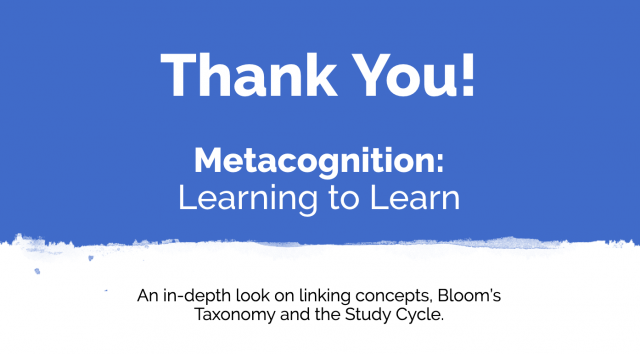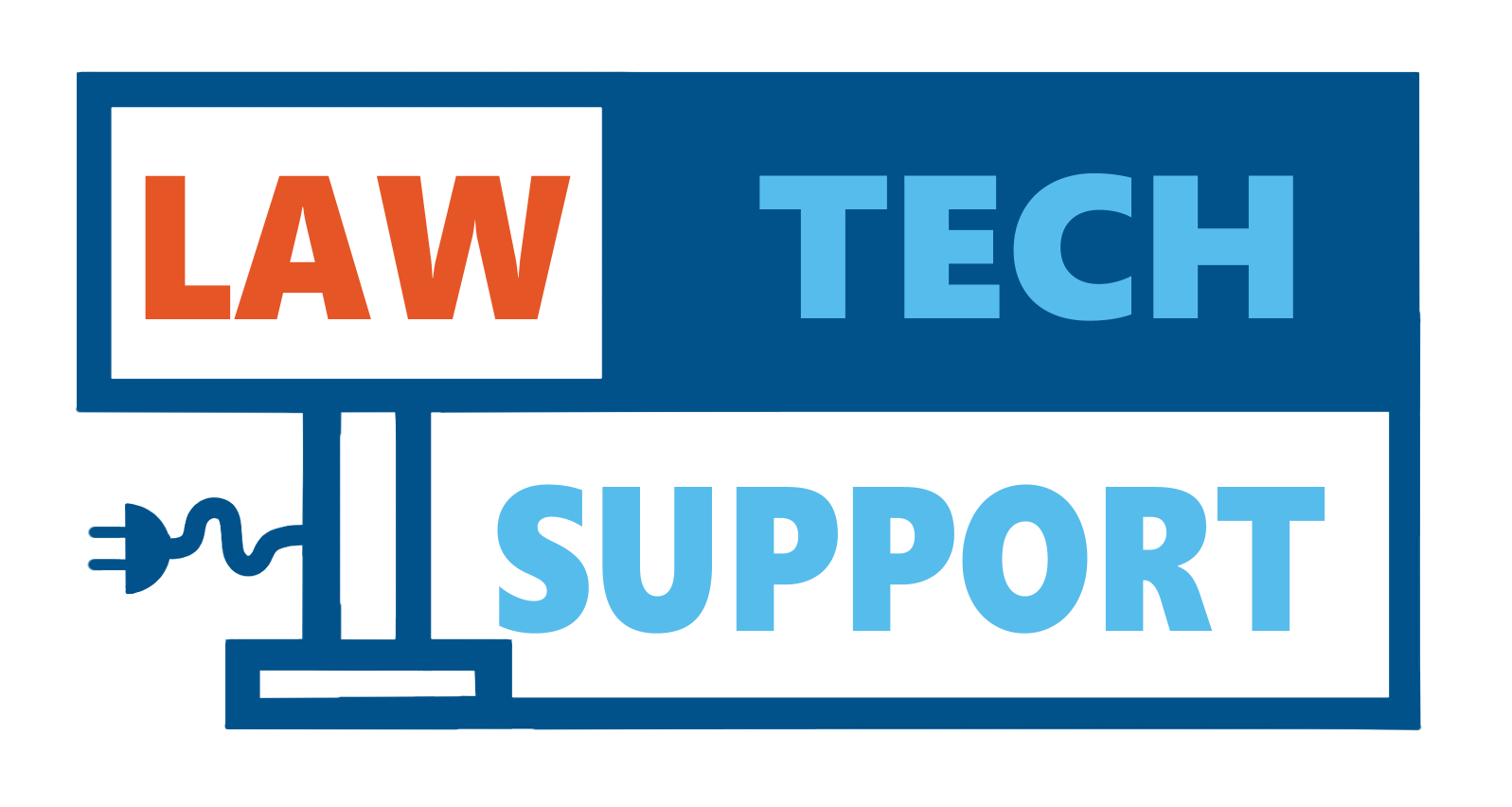This presentation will explore Metacognition, or the awareness and understanding of one’s own thought process. In understanding the different approaches to learning, you will be able to enhance your own learning as a student.
This presentation is compiled from the information presented in Sandra McGuire’s best-selling Metacognition book, “Teach Yourself to Learn: Strategies You Can Use to Ace Any Course at Any Level”. You can buy the book here.
In this presentation, we will cover:
Linking Concepts
Bloom’s Taxonomy
The Study Cycle

Metacognition, literally “cognition about cognition”, or “thinking about thinking” is the process of understanding how you learn and includes knowledge about when and how to use particular strategies for learning or problem-solving. This understanding can manifest in being aware of oneself, and monitoring or judging one’s level of learning.
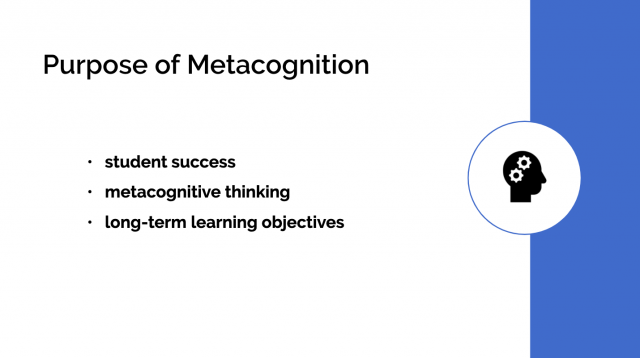
The purpose of this presentation is to explain some strategies and self-evaluation techniques to equip you, as a student, realize your personal learning patterns and objectives.
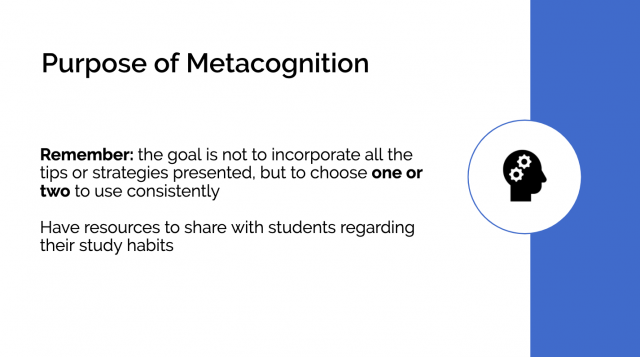
Remember: for highest efficiency, choose one or two techniques that you can feasibly implement into a studying routine. There is a lot covered in this presentation; see if there are one or two ways you can implement metacognition in your own academic life.
Short-term benefits include:
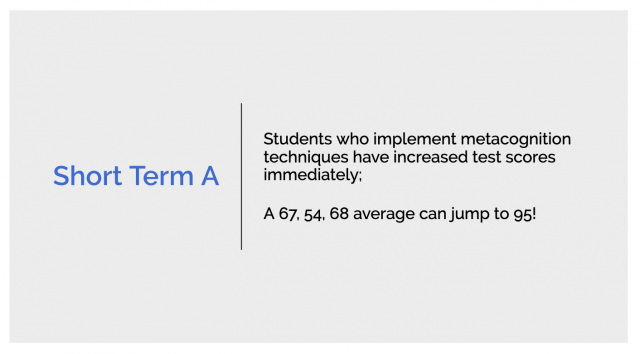
Increased metacognition awareness has been proven to massively improve test scores.
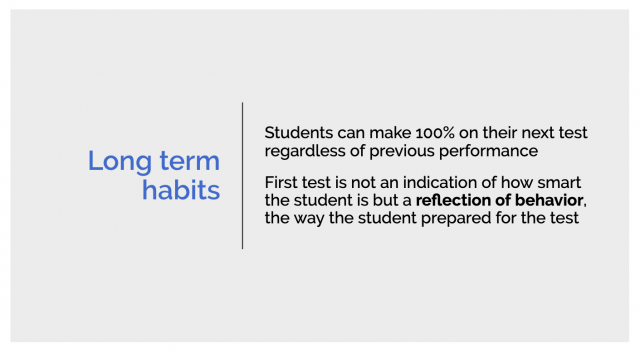
This is not a one-off phenomenon; building strong learning habits is a continuous process that will continue to benefit you long-term.
The first metacognition strategy is linking concepts:

To illustrate this concept, follow this exercise, and have a pen or pencil and paper ready. There will be a timer set for 45 seconds. On the next slide, count all the vowels you see until time runs out.
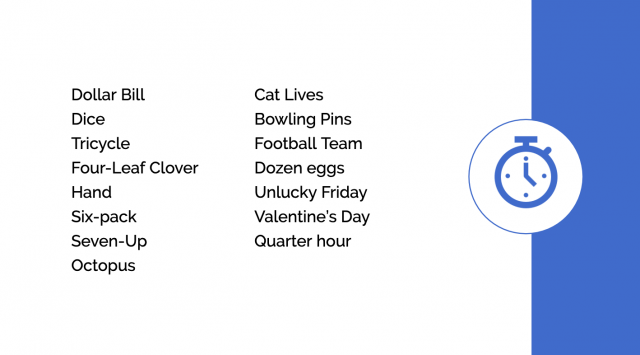
Now, try to write down as many words as you can remember from the previous slide. If you’d like to calculate your score in percentage divide the number you remember by 15, and multiply by 100. The average is 3 phrases remembered, or 20%; did you beat the average?
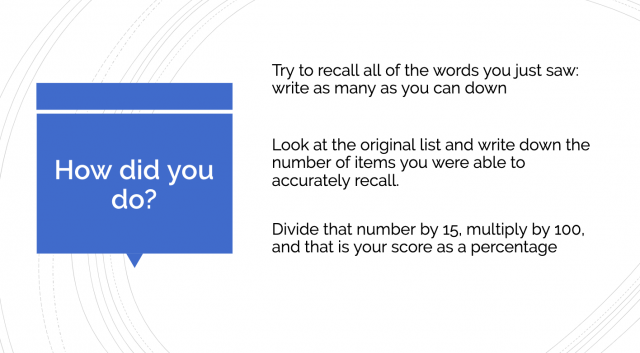
Looking at the list again, try to find the underlying pattern that orders the group.
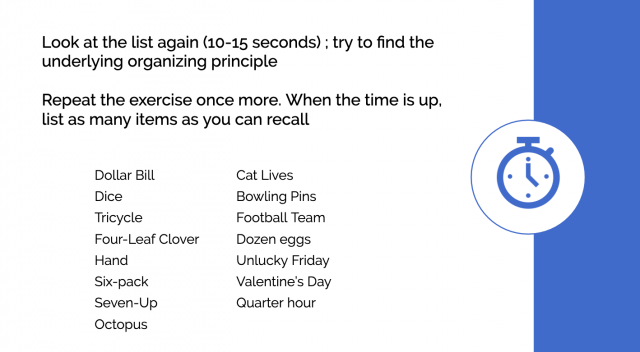
Now, repeat the exercise again- you will be given 45 seconds.
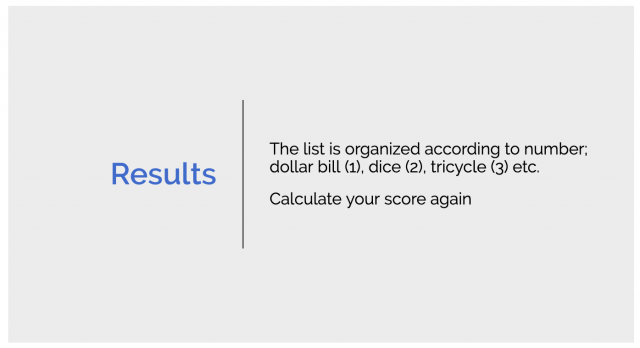
Did your average improve?

This exercise illustrated the strategy “linking concepts”, in particular focusing on the overall goal. When the goal is clearly set (memorize the list) to match the expected outcome (write as many words as you can recall), the outcome is much improved.
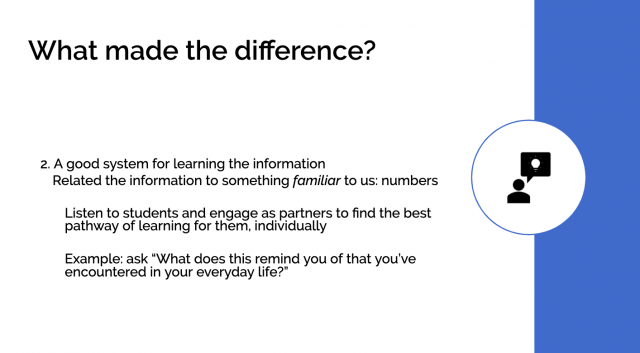
Secondly, and implementing a holistic, pattern-driven strategy helped to make the learning process familiar. By linking the words to numerical order, it was easier to recall the words in the exercise. In academia, the “linking concepts” approach remains relevant; connecting content to the overall goal, and making content relatable to things familiar to the student helps to format the learning experience to the student.
For example, you may try to link the content or your readings to something you have encountered in everyday life, thus making the learning process tailored to your own experiences.
The second strategy is Bloom’s Taxonomy:
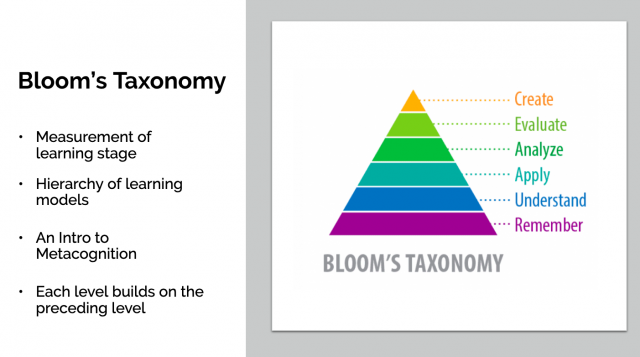
Bloom’s taxonomy is a quantitative, measurable hierarchy. Each level of learning builds on the next, and to understand which level you are at versus which level you need to be at for the goals of the class is vital.
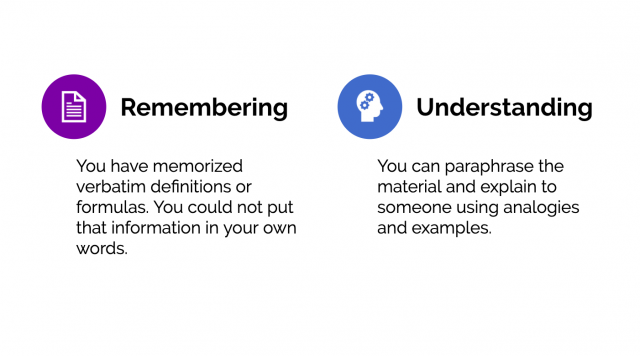
The first stage is remembering, essentially rote memorization. The second is understanding the terms, characterized by the ability to paraphrase the content.
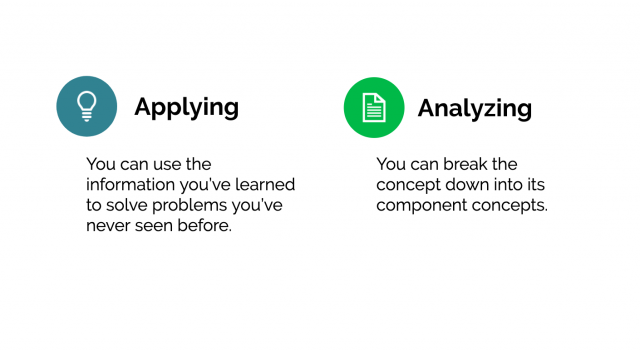
The third is applying, where you can take the information you’ve understood and use it in new contexts that you have not seen before. Fourth is analyzing, where you can break the concept down into parts, and examine the constitution or structure of the concept.
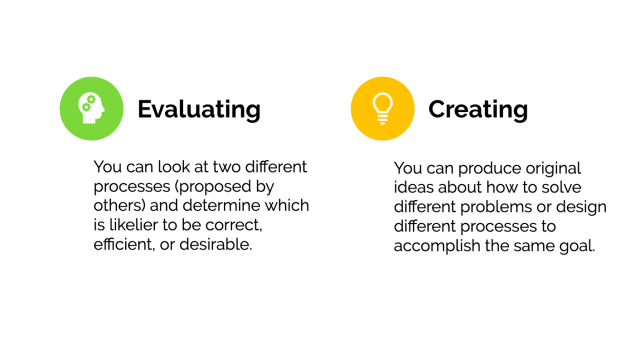
Fifth is evaluating, where you can take the concept you’ve learned and compare, contrast, and judge influences and competing ideals based on your knowledge of the concept. Lastly, sixth creating: in this stage, you are able to solve problems originally, building off of the knowledge of the concept.

Differing from the buy-in to metacognition, which many view as simply raising grades, Bloom’s taxonomy challenges you to truly understand the material, identify how you, personally, interact with material, assess what you know, and shift study habits to engage in deeper learning.
After evaluating where you are on the taxonomy, how do you move higher, out of levels of memorization and into levels of deep comprehension? Use the study cycle!
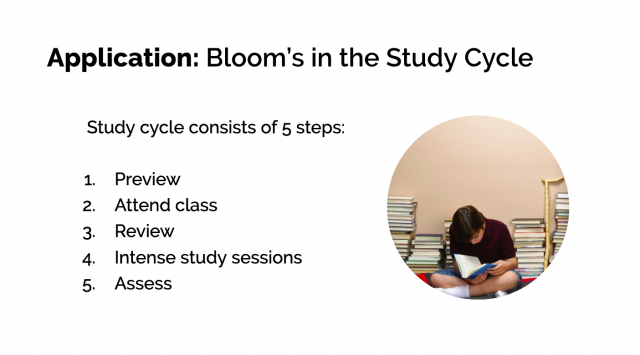
The cycle consists of 5 steps: Preview, attend class, review, intense study sessions, and assessment.
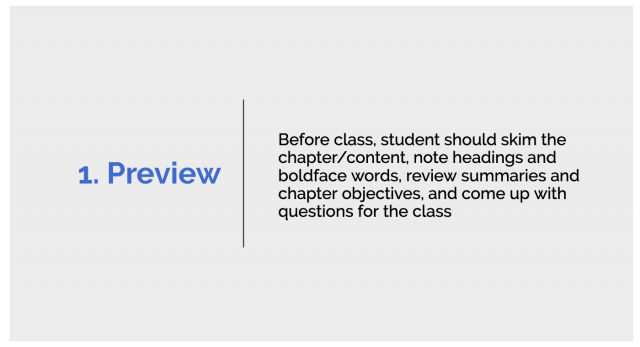
The preview stage happens before class, where you skim over notes or completed homework to ascertain the learning objectives for class that day, and any questions you may have.

The second stage is attendance; go to class, no matter what, and taking meaningful notes.
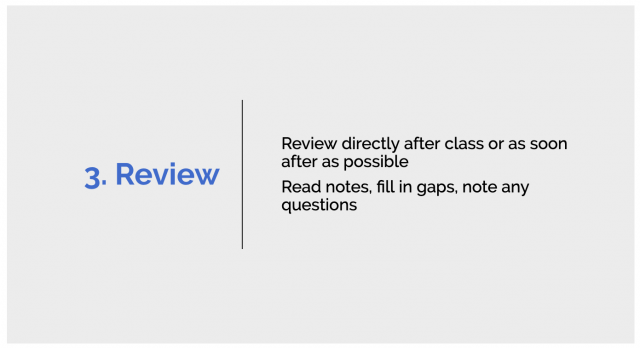
Directly after class, you should review main concepts learned that day and review by reading over notes and answering questions.
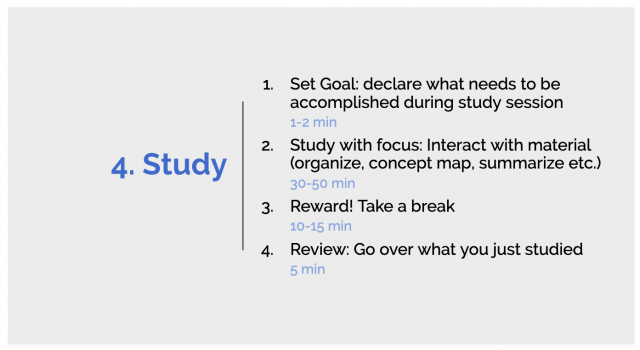
The fourth step is engaging in short study increments where you implement metacognition techniques.
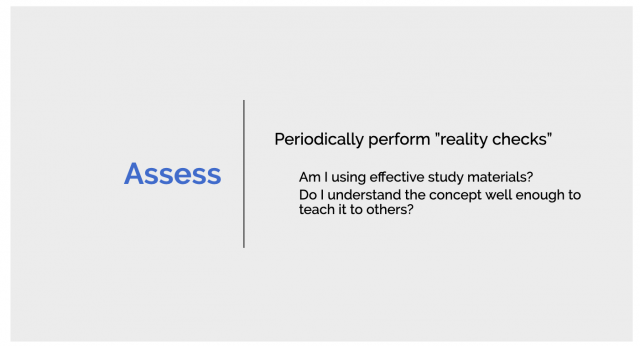
Periodically, you should pause and make sure that you fully understand the material you have studied. You may try assessing their stage in Bloom’s taxonomy; are you simply in the memorizing stage, or higher in the evaluating stage?

In college, the level of material retention necessary to succeed in a class is higher than in high school. You should be aware of the Bloom’s stage they need to be at to succeed; typically, you should be at the analysis or synthesis stage.
Next is a model of the study cycle when applied to reading.
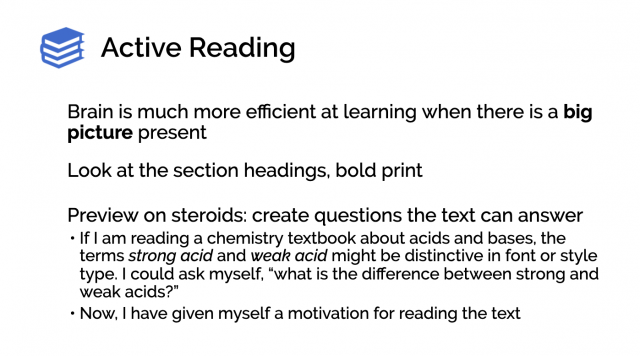
As the student, you should be able to identify the questions the instructor needs to you answer before reading the text; skim the reading broadly first to understand the topics that will be covered in the reading.
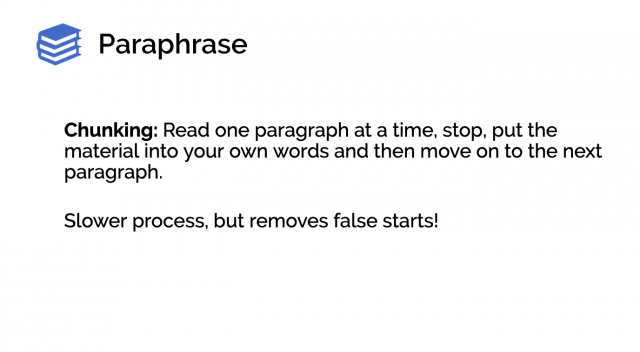
When reading the actual text itself, you should not go straight from beginning to end, instead you should read in chunks to fully digest the information in a feasible manner.

It is vital that you attend class and take physical, hand-written notes, engaging completely with the material while in class.
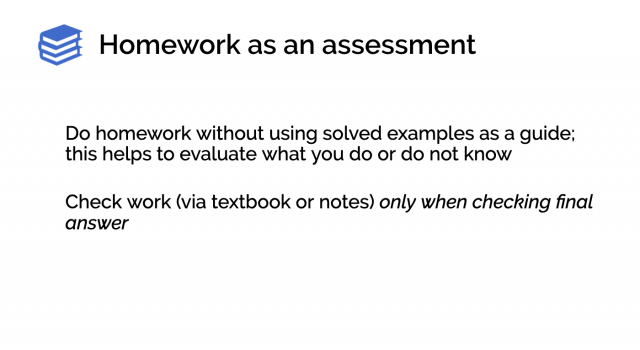
Homework should be done first without notes or a guide, and used as an assessment to see how well you understand the material covered in readings or class.
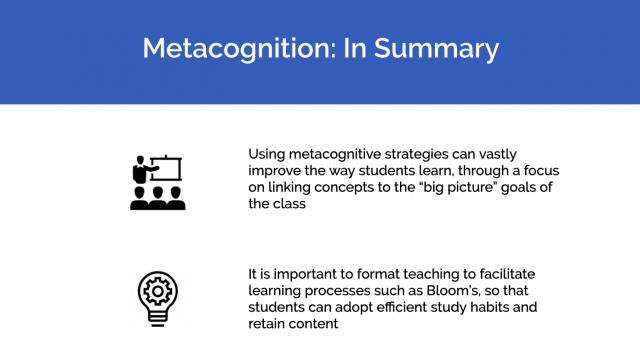
In summary, using metacognitive strategies is deeply beneficial in you understand how you individually learn best, and how to format your study and class practices to master material.
